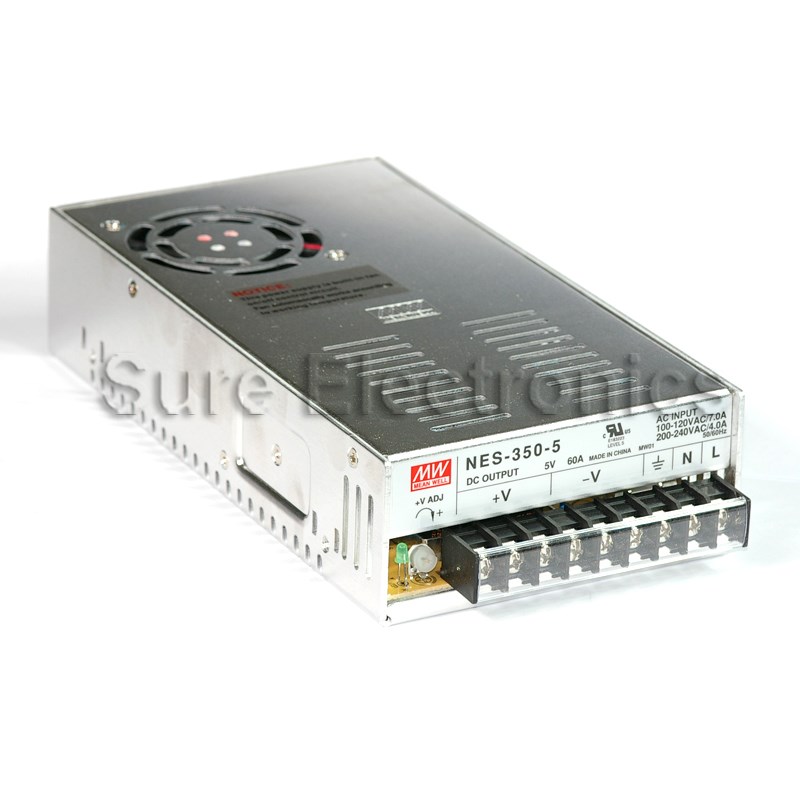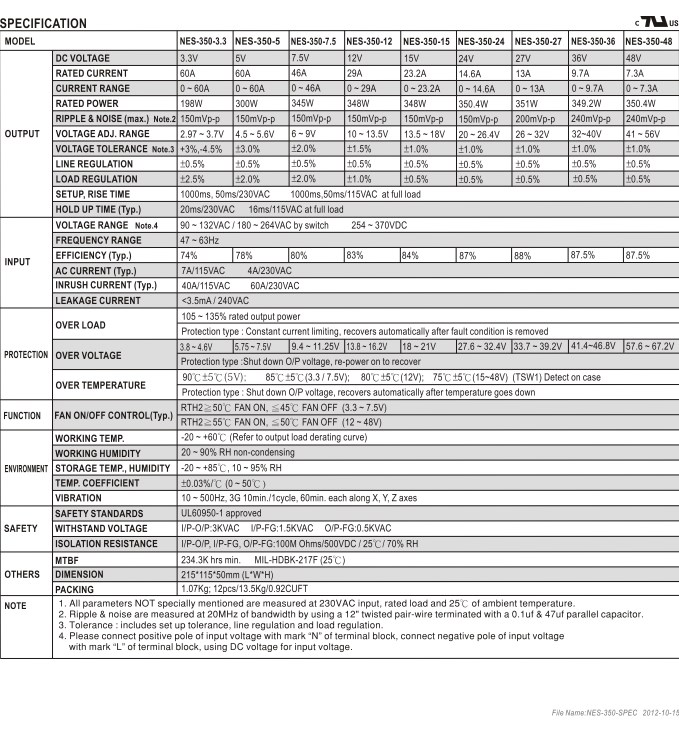Dunning-Kruger
Canada
Asked
— Edited
Can one of you guys confirm the AC connection of this Meanwell 350W 5V power supply?... The ground is self explanatory but I need confirmation on the neutral and hot for the AC connection... Just to be sure what goes to "N" and what goes to "L" on the Meanwell?... In the note section of the specifications it mentions positive and negative when referring to AC voltage... kind of got me confused since AC doesn't go by + and - ...Thanks guys...



Oh and I am going to be butchering a 3 prong extension cord to use with it so how do I tell which wire in the cord itself is hot and which is neutral?
@Richard R
Line(white wire) and Neutral (black wire). And usually there's a PE (Potential Earth, green wire) after those 2.
You're right AC it doesn't matter what + and - is, it is just there to differentiate the 2, as it has to be the same on the other end of the connection. This is particularly useful if you're daisy chaining multiple components like breakers, etc.
@Doombot ... Thanks Marc... Should have known that you would have known that....
@Richard R Funny I didn't even look at the power supply pic...Yeah the wires on an extension cord should be color coded so just hook to prong (green and yellow wire) to the earth ground symbol beside "N".
Got it... Thanks Dude...
L is line or +, N is neutral or - . With AC it really doesn't matter which wire of the two power prongs of your plug goes to either of these two. However don't hook up the third one that sits below the two power prongs there. That's the earth ground. It gets attached to the connector with the funny lines that look like an arrow. Use a continuity tester to find out what wire is attached to each prong but usually geeen is the earth ground. However I never trust anything and always test.
@Dave.... I will definitely test with my multimeter....Thanks dude....
Standard UK kit.
L = Live/Line/Hot whatever you want to call it. N = Neutral The other one is Earth for a 3 pin plug (although do the US/Canada use earth?)
Live and Neutral don't really matter which way around they are connected however it may do in some circumstances (i.e. if used with residual current devices). Over here Live has an inline fuse where as neutral doesn't. Generally though, and highly likely in your case it wouldn't matter.